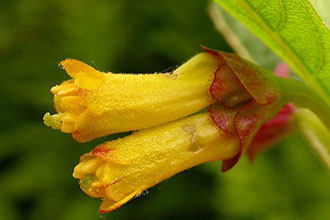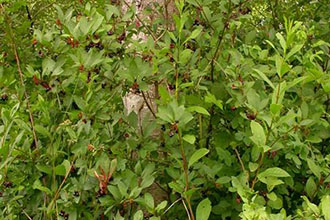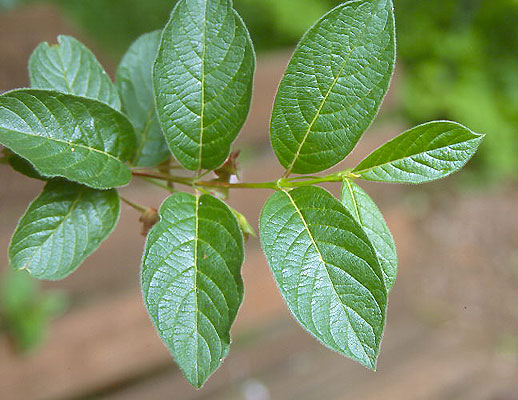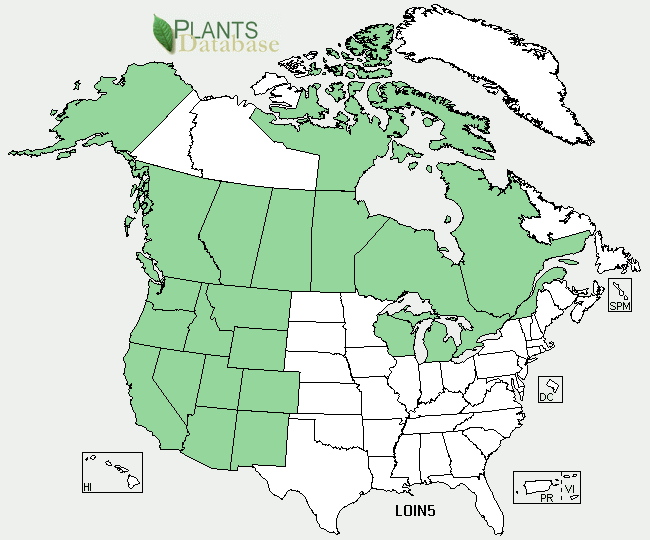Taxonomy: Kingdom - Plantae (plants). Subkingdom - Tracheobionta (vascular plants). Superdivision - Spermatophyta (seed plants). Division - Magnoliophyta (flowering plants). Class - Magnoliopsida (dicotyledons). Subclass - Asteridae. Order - Dipsacales. Family - Caprifoliaceae (Honeysuckle family). Genus - Lonicera L. Species - Lonicera involucrata (Richardson) Banks ex Spreng.
Ecology: Twinberry honeysuckle is an upright deciduous shrub that grows up to 3-4 m tall. The leaves are in opposite pairs, egg or broadly lance shaped, pointed, and often hairy beneath. The flowers are tubular, in pairs, and yellow. The double or "twin" shiny black berries that ripen in July or later are cupped by prominent purple-red colored bracts...The bitter ripe berries may be mildly toxic or poisonous to humans. There is some suggestion the foliage or other plant parts may have a mildly toxic effect on cattle.
Twinberry honeysuckle occurs from the sea coast to high elevations in alpine regions. It ranges from Alaska south to Mexico and west through the Rocky Mountain states, as well as most of Canada. The species is adapted to soils that vary from course sand to fine textured silt and clay with a pH of 5 to 8 (moderately high acidity to slightly basic). Found on moist, seasonally wet, and flooded sites, habitats include moist woods, thickets, riparian zones and bogs. It also occurs in brackish tidal swamps and sandy areas along the coast. While tolerant of full sun, twinberry honeysuckle is most commonly found under shady conditions. It will grow on upland soils with moderate fertility but drought tolerance is lacking.



